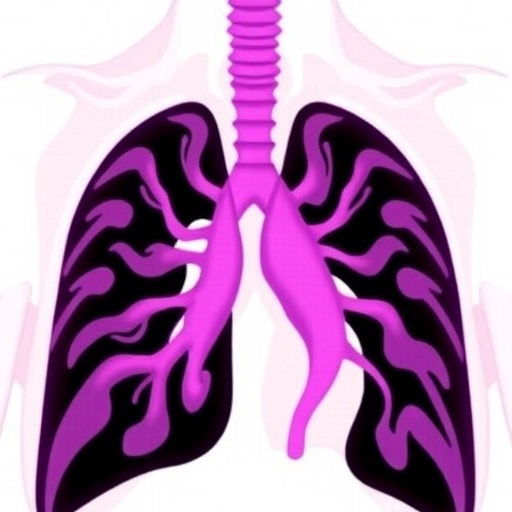PROTECT YOUR DNA WITH QUANTUM TECHNOLOGY
Orgo-Life the new way to the future Advertising by Adpathway
In the realm of sports and wellness practices, an innovative intersection is emerging between ancient traditions and cutting-edge technology. A recent study, undertaken by researchers Baldinger, Lippmann, Lisca, and others, aims to revolutionize the practice of Qigong through the application of a sophisticated motion capture and feedback system. This research is not merely an exploration of technological advancement but stands as a bold stride toward integrating modern scientific methodologies with time-honored practices, catering to a global audience engaged in health and wellness.
Qigong, an ancient Chinese practice combining meditation, relaxation, physical movement, and mindfulness, has long been recognized for its health benefits. This holistic exercise form not only promotes physical fitness but also enhances mental clarity and emotional balance. However, despite its rich history and documented benefits, practitioners have often faced challenges in accurately assessing their techniques and progress. Enter the motion capture and feedback system, a groundbreaking solution designed to enhance the Qigong experience and facilitate more precise and personalized practice.
At the heart of this study lies an elaborate motion capture system, capable of synchronizing the intricate movements of a practitioner with real-time feedback mechanisms. By employing advanced motion tracking technologies, the system meticulously records each motion, enabling a comprehensive analysis of posture, rhythm, and flow. This technological integration represents a significant leap forward, as it allows practitioners to engage in self-reflection and informed adjustment of their techniques, driven by quantitative data rather than subjective interpretation.
The research and development of the motion capture system involved extensive collaboration among specialists from various fields, including biomechanics, sports engineering, and traditional Chinese medicine. The interdisciplinary approach not only enriched the project but also ensured that the cultural essence of Qigong was preserved while allowing for scientific scrutiny. As the team delved deeper into the mechanics of movement in Qigong, they identified key parameters that define the effectiveness of each posture and transition, laying the groundwork for a comprehensive training tool.
A pivotal component of this study is the real-time feedback mechanism that accompanies the motion capture technology. It operates not merely as a passive observer but as an engaging element that guides practitioners through their sessions. This system offers corrective suggestions based on performance metrics, which can significantly aid in refining technique. For instance, if a practitioner is misaligned during a movement, the system can alert them to adjust their position, thereby enhancing their overall experience and effectiveness.
Additionally, the broader implications of such technology extend beyond individual practitioners. As the system generates data on movement patterns and common misalignments, it can also facilitate research on population-level trends in Qigong practices. This information is invaluable for practitioners, instructors, and researchers alike, as it can inform training regimens and contribute to the evolution of Qigong as a practice suited for modern needs. The analysis of large datasets may lead to the identification of universal principles of effective practice, further bridging the gap between ancient wisdom and contemporary scientific understanding.
Furthermore, the COVID-19 pandemic has fundamentally altered how people approach wellness and fitness. With traditional classes and gatherings disrupted, many individuals turned to virtual engagement and remote practices. The motion capture system supports this shift, promising an interactive experience that can be accessed from home, ensuring that practitioners continue to receive the benefits of Qigong in a safe and supportive environment.
The researchers also emphasize the educational potential of this technology. By incorporating the motion capture system into structured training programs, novice practitioners can more easily access the foundational elements of Qigong. The methodology allows for a tiered learning experience, where users can systematically progress from beginner techniques to more complex movements as their skill level advances. This not only elevates individual practice but may also enhance the overall quality of Qigong instruction by enabling instructors to address common issues encountered by students.
The consequences of integrating motion capture technology into Qigong training extend beyond mere enhancement of practice; they herald a new era of personalized wellness. Practitioners can obtain tailored feedback that considers their unique physiques, skill levels, and progress, fostering a sense of ownership over their health journey. As wellness becomes increasingly individualized, tools that cater to such specificity will likely gain traction, making this research significant not only within the context of Qigong but also in the broader landscape of holistic health practices.
As the study is published in the upcoming issue of Sports Engineering, the anticipation surrounding this groundbreaking technology is palpable. Researchers and practitioners alike are eager to witness how the integration of these high-tech solutions will reshape the experience of Qigong, and potentially, the broader wellness industry. This transformation has the potential to unlock new dimensions of engagement with ancient practices, drawing in a new wave of practitioners who may have previously been deterred by the lack of measurable progress in their Qigong journeys.
In conclusion, the development of a motion capture and feedback system for Qigong stands as a remarkable example of how technology can enhance traditional practices. By combining scientific rigor with cultural heritage, this research not only promises to improve individual techniques but also opens the door for a new understanding of the holistic benefits of Qigong. The ongoing fusion of ancient practices and modern technology could redefine the wellness landscape, offering tools that empower practitioners to achieve their health aspirations more effectively than ever before.
This partnership between innovation and tradition reaffirms the timeless relevance of Qigong, illustrating that as the world evolves, so too can our approaches to health and wellbeing. The implications of these advancements are profound, underscoring the importance of embracing both history and progress in the quest for holistic health. As researchers continue to refine and expand upon these technologies, the future of Qigong—and indeed, the broader field of wellness—promises to be an exciting journey.
Subject of Research: Motion capture and feedback system for Qigong.
Article Title: Development of a motion capture and feedback system for Qigong.
Article References:
Baldinger, M., Lippmann, K., Lisca, G. et al. Development of a motion capture and feedback system for Qigong. Sports Eng 28, 23 (2025). https://doi.org/10.1007/s12283-025-00507-6
Image Credits: AI Generated
DOI: 10.1007/s12283-025-00507-6
Keywords: Qigong, motion capture, feedback system, wellness technology, biomechanics, ancient practices, personalized health.
Tags: ancient traditions meet modern scienceemotional balance through movementenhancing mindfulness through technologyfeedback systems for Qigonghealth benefits of Qigongimproving technique in Qigonginnovative sports wellness practicesmotion capture in wellnessmotion tracking in physical exercisepersonalized Qigong training methodsQigong practice integration with technologyreal-time feedback for wellness practices


 8 hours ago
9
8 hours ago
9





















 English (US) ·
English (US) ·  French (CA) ·
French (CA) ·